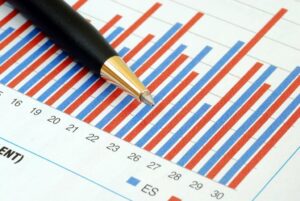
This specialized branch of accounting helps businesses make informed decisions by analyzing various cost components. First, the chapter will define the different types of costs and cost purposes. Next, cash flow diagram conventions and uses are discussed in terms of breakeven, profit, and loss. Finally, https://www.bookstime.com/ the fundamentals of cost accounting for materials and components, labor, and overhead allocation are presented. The company’s monthly fixed costs include rent for the factory, insurance, and property taxes. The company’s variable costs include raw materials, direct labor, and shipping expenses.
Role of Cost Accounting in Decision Making

This can be done using various methods, such as tracing costs to individual production units or allocating costs across products based on sales volume. Sunk costs are historical costs that have already been incurred and will not make any difference in the current decisions by management. Sunk costs are those costs that a company has committed to and are unavoidable or unrecoverable costs. Opportunity cost is the benefits of an alternative given up when one decision is made over another.
Understanding Cost Accounting: A Comprehensive Guide to Cost Management and Decision Making
One of the primary criticisms is that it can lead to outdated and potentially misleading financial information. As market conditions change, the original purchase price of an asset may no longer reflect its current value, leading to a disconnect between the financial statements cost accounting basics and the economic reality. The historical cost principle significantly influences the presentation and interpretation of financial statements. By recording assets at their original purchase price, companies provide a consistent and objective basis for financial reporting.
- With standard costing, rather than assigning the actual costs of direct materials, direct labor, and overhead expenses to a product, a business assigns specific “standard” costs.
- Variable costs are those costs that change in proportion to the level of activity within a company.
- This term refers to sales minus variable costs and is a crucial indicator of a company’s financial health.
- Fixed costs do not change with production levels, making them easier to track.
- The university forges strong links with companies and scientific institutions across the world.
- Variable costs, on the other hand, fluctuate with production levels and can be more challenging to track.
- For example, if XYZ company expected to produce 400 widgets in a period but ended up producing 500 widgets, the cost of materials would be higher due to the total quantity (volume) produced.
Financial Statements
Absorption costing, also known as full costing, includes all manufacturing costs—direct materials, direct labor, and both variable and fixed overhead—in the cost of a product. This method is required for external financial reporting and provides a comprehensive view of product costs. However, it can sometimes obscure the impact of fixed costs on profitability, making it less useful for internal decision-making. The industrywide move to mass production brought new challenges in managing costs. Businesses needed to track not only direct variable costs but also indirect costs such as overhead. This led to the development of various cost accounting systems, including job costing, process costing, and activity-based costing.

What’s different about throughput is that it does not concentrate on reducing expenses, it focuses on constraints, regardless of whether they are internal or external. Managers can then use this information to benchmark against competitors and make data-driven decisions about resource allocation and process optimization. The findings of the above-cited study on advantages of cost accounting confirms this benefit of cost accounting.

What is your current financial priority?

Marginal costing can help management identify the impact of varying levels of costs and volume on operating profit. This type of analysis can be used by management to gain insight into potentially profitable new products, sales prices to establish for existing products, and the impact of marketing campaigns. Activity-based costing (ABC) identifies overhead costs from each department and assigns them to specific cost objects, such as goods or services. These activities are also considered to be cost drivers, and they are the measures used as the basis for allocating overhead costs. When a business has a better idea of exactly how its money is being spent, it can better budget for the future.
Ask a Financial Professional Any Question
Individually assessing a company’s cost structure allows management to improve the way it runs its business and therefore improve the value of the firm. Financial accounting is focused on reporting the financial results and financial condition of the entire business entity. Fixed costs do not vary with the number of goods or services a company produces over the short term.
- You will also learn about the major differences between cost accounting and financing accounting and the role of a cost accountant.
- The trinkets are very labor-intensive and require quite a bit of hands-on effort from the production staff.
- Direct expenses are necessary to produce goods or services, while indirect expenses support the operation of the business.
- If the variance analysis determines that your costs are higher than expected, then the variance is unfavorable, and your business has generated less profit than expected.
- In today’s competitive business world, any advantage you can give yourself is worth its weight in gold.
- For example, let’s say a company uses cost accounting to calculate the total cost of manufacturing one smartphone as $500.

The price variance is a valuable tool for budgeting and assessing profitability. If the actual cost of a product or service is less than the standard cost, this is a favorable variance, indicating greater profitability. On the other hand, if actual costs are higher than standard costs, this is an unfavorable variance, indicating loss.